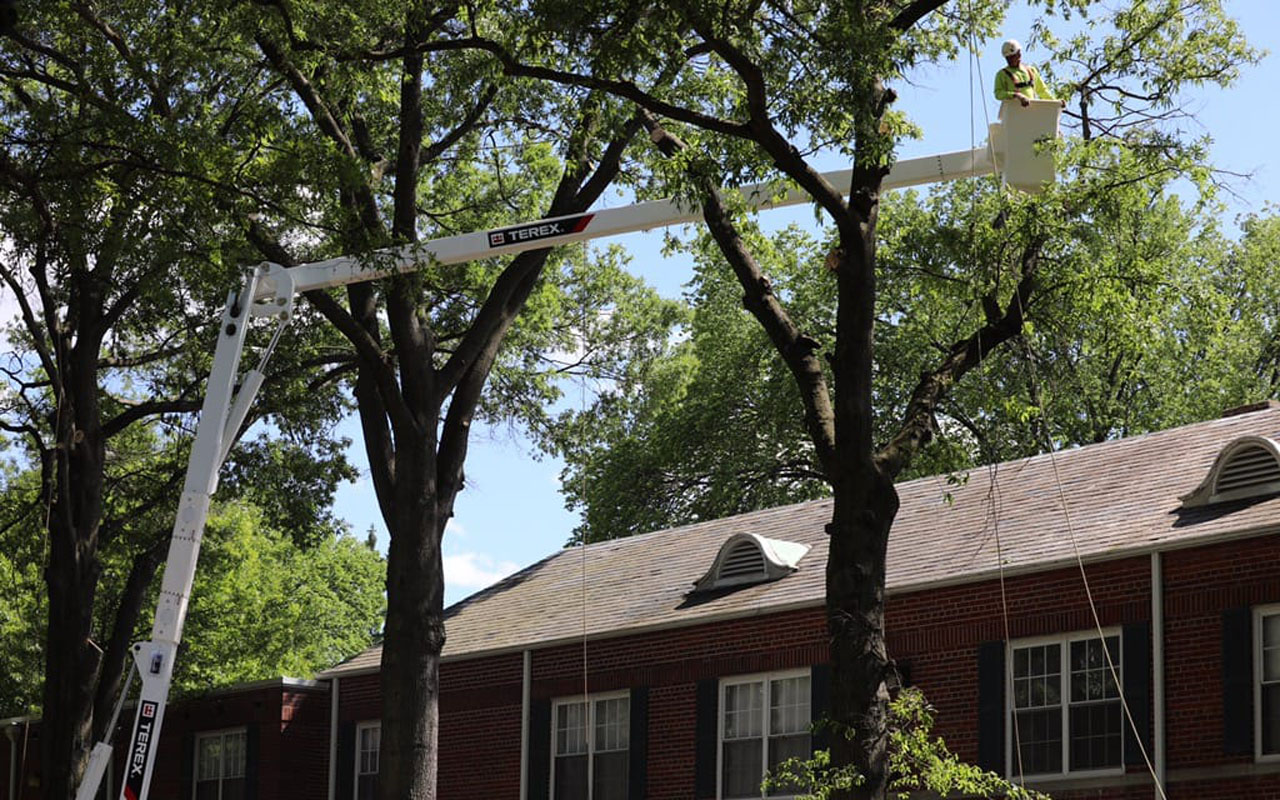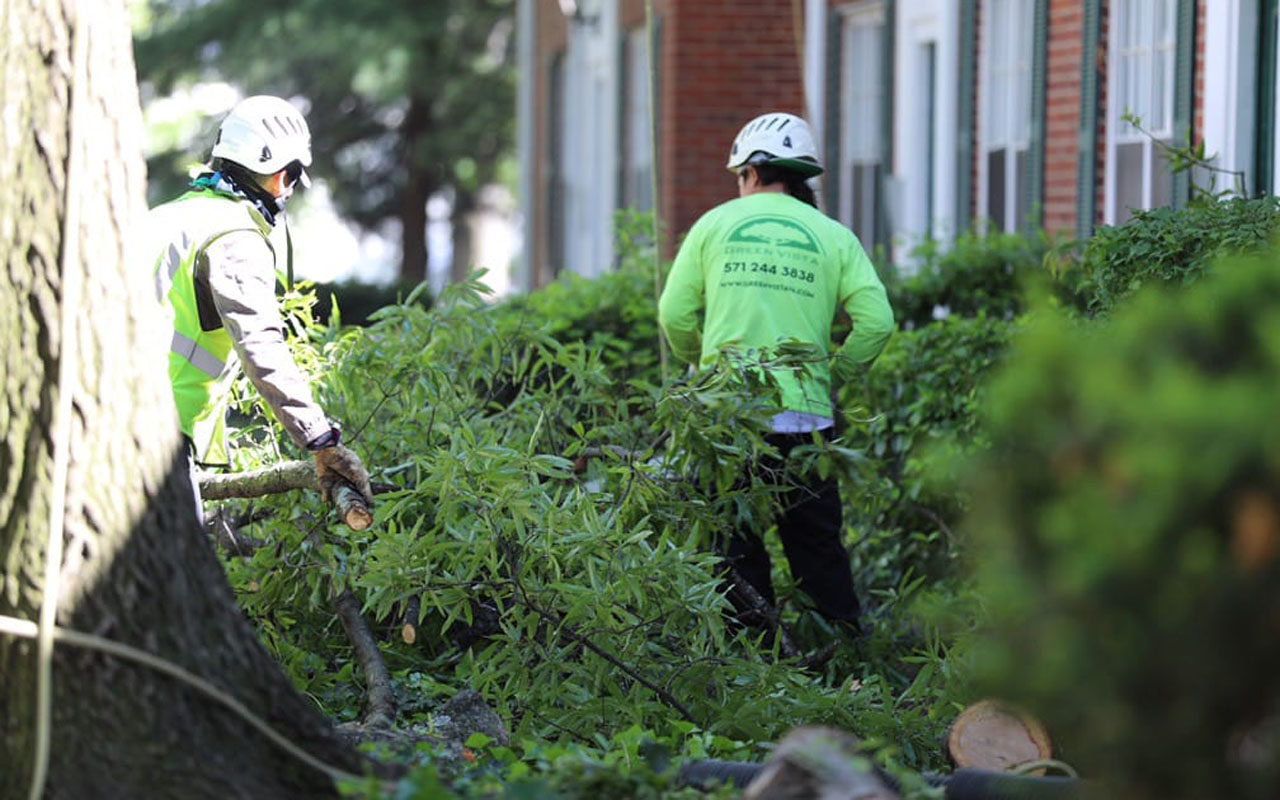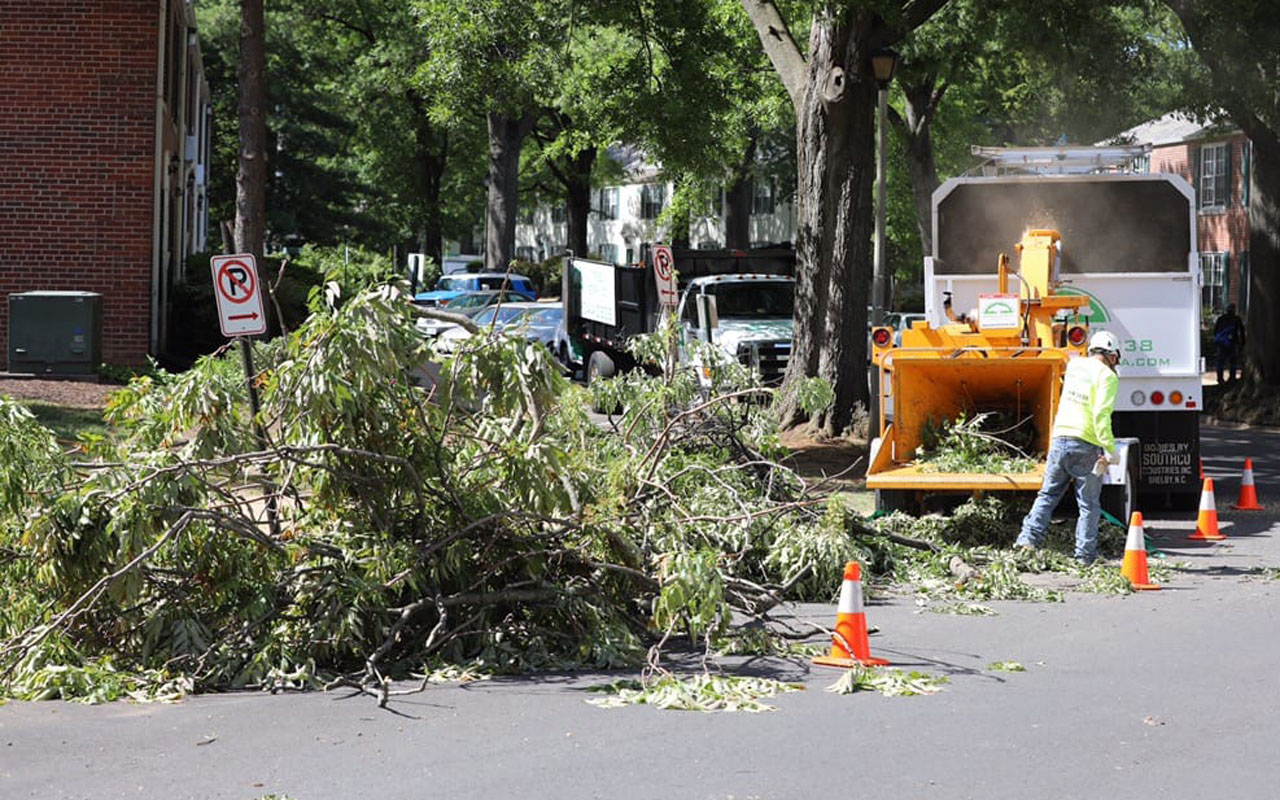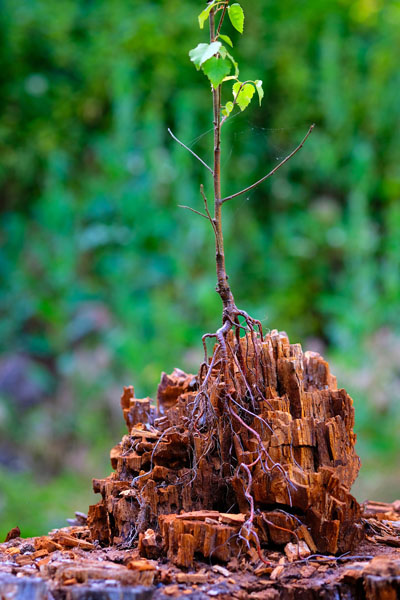Looking at that overgrown tree in your yard and thinking about pruning or removing parts of it yourself? No one can fault you for dreaming of wielding a chainsaw while wearing flannel. Who hasn’t wanted to be a lumberjack at one time or another?
In reality, lumberjacks and arborists are less about flair and more about knowledge: knowledge of trees and knowledge of safety and risks. So before you start pruning or sawing, consider the drawbacks of DYI tree work and the benefits of professional tree care.
Safety, Safety, Safety
Pruning small or easy-to-reach branches on shrubs or small trees is a skill that can be learned, and generally doesn’t carry many risks if you know what you’re doing. Small branches can be cut to fit into a green waste can, which can then be left at the curb for pick up.
But when pruning large trees or branches, the risk of injury to both the tree and yourself can be much greater.
As trees mature, their crowns can only be reached from above ground level, increasing the chance of accidents and mistakes. Even if you know how to properly climb a tree and use power tools, risks can outweigh the benefits of doing this type of work yourself.
Being hit by the tree when attempting tree removal or being struck by a falling branch when pruning are the leading causes of death for homeowners who attempt their own tree removal or pruning. The next most common cause of homeowner injuries or fatalities is falling out of a tree, usually because a ladder was used to access the tree canopy, rather than climbing the tree properly with the use of ropes and safety gear (or using a crane).
Should You Do Your Own Tree Work?
If you’re considering doing your own tree work or having friends help you with pruning or removal, first ask yourself these questions:
Are you fully insured?
Accidents happen, and accidents involving large trees or tree limbs can affect property – yours and your neighbor’s. Being a good neighbor means considering how your actions may affect others, and limiting the chance of damage and disturbance. Even if you are insured for damage to a neighbor’s property, assume your neighbor would rather have their belongings remain as they are.
Professional arborists are insured. They’re also trained to evaluate both a trees’ structure and its surroundings, with the goal of minimal disturbance. If an accident does damage yours or your neighbor’s property, you’re both covered.
Do you have a lot of time?
Tree pruning and tree removal are both time-consuming tasks. If you are working alone and removing branches in increments, it can take a long time to prune a large tree. Each time you climb and descend a tree you risk injury, and fatigue or distraction compounds the chances of injury.
Professional tree crews work together as a team to prune or remove a tree as efficiently as possible while maintaining safety standards and protecting your property.
Do you know what you’re doing?
Pruning or removing large branches is different from small-scale hand pruning of shrubs and young trees. Once you’re up in a tree, you can’t step back and evaluate your work or your next cut, and you can’t easily get out of the way. Climbing up and down a tree to check your work is time-consuming and ineffective.
Arborists “read” a tree before climbing and know the results of each pruning cut they make. Their training also ensures that they wear safety gear, know how to maneuver around a tree’s crown, and handle large, powerful tools properly, even while hanging from ropes.

A bucket truck enables a Green Vista employee to reach tall branches without the effort and risks of climbing the tree
Can you even get to your tree?
Trees in or near power lines and trees in hard-to-reach locations are even more difficult to prune, and sometimes can’t be safely climbed. A professional tree care company with advanced equipment such as a remote-controlled crane can reach trees that you can’t and can prune them with accuracy or remove them altogether.
Removing a tree is labor-intensive and dangerous. The size and weight of large branches and sections of trunk are often underestimated by DIYers, as is the likelihood of damage or accident when trying to remove cut sections. When you need a tree removed from a tight situation, a crane may be the only way to safely remove branches and tree trunks.
Do you have the right equipment?
Pruning a large tree canopy or removing large branches requires specialized equipment. First, you’ll need to get yourself into the upper branches of the tree, and that’s not something you can safely do with a ladder. Not only won’t the ladder reach all the branches, but it’s likely to tip or slip, bringing you along with it.
Instead, you’ll need a climbing harness (a “saddle”), multiple ropes, carabiners, ascenders, and more. Then there are the tools – you’ll need a pruning saw in a protective scabbard, a lightweight but powerful chainsaw that you can hang from your waist, and pruning shears, at a minimum. There’s also the safety equipment, including a hardhat, hearing protection, and eye protection, as well as the gear needed to tie you into the tree to prevent falling. Plus, if you’re working with others, you’ll need some way to communicate with them, such as a radio headset.
Tree care professionals not only have all the proper gear, they’re also well-trained and experienced in how to properly use it. It’s not easy to start a chainsaw while you’re perched 60 feet up in a tree!

Do you know what to do with the green waste from large-scale tree work?
Unless you split your own firewood, big pieces of tree trunks or branches aren’t always a welcome addition to your garden. Getting rid of the amount of green waste generated by tree pruning or removal is difficult if you rely on your green waste can. You’ll have to cut everything all over again to fit, and will only be able to dispose of it in small quantities.
Professional tree care companies bring a woodchipper that quickly turns branches into bit-size pieces that are fed into a waiting truck bed and hauled away to make mulch.

Pruning and removals create a lot of green waste. A professional tree service uses heavy-duty chippers to turn all of those branches into mulch.
Do you like tree stumps?

Tree stumps can resprout into a new tree if not removed by a stump grinder.
If you do, you’re in luck because large trees leave large stumps. Sometimes those stumps start sprouting new branches from around their base, which you will need to cut off, and sometimes a stump will decay. If you wait for a tree’s trunk to decay naturally it will take years, attract fungi, termites and ants, and then you’ll need to dig up and remove the remaining material.
Or, you can ask your tree care professional to grind it out, which takes a couple of hours at most and leaves the location free to be replanted. Stump grinders are designed to make minimal disturbance as they chew up the trunk and roots into chunks. Those chunks are hauled away immediately, and the area of the former tree trunk is raked and left clean.
Weighing Your Options
You should learn all you can about tree care and pruning from a trusted source, and then realistically weigh your options.
If you decide that the DIY approach isn’t worth the risk, time and resources, call the tree care professionals here at Green Vista Tree Service and ask for an estimate for the job you need to have done. We’re happy to answer any questions you may have and our experienced estimators will be able to walk you through how the job will be done and what it will take to do it right. You may be surprised by just how affordable quality tree work can be in our northern Virginia service area – especially when you compare it to doing it yourself!
Get helpful tips, local news, inspiring stories, and more delivered right to your inbox every month. Don't miss another issue - join today!





